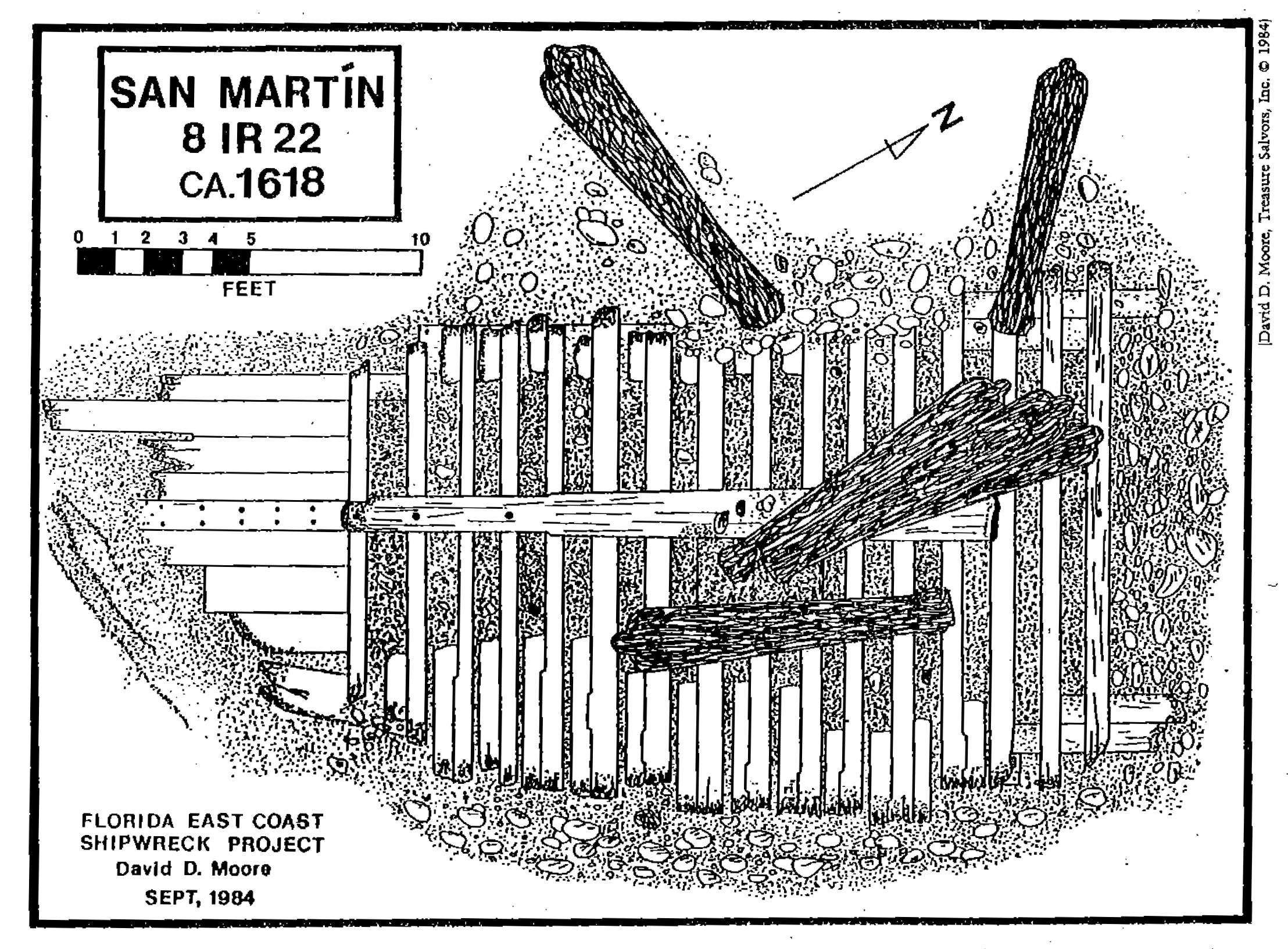Green Cabin Shipwreck (1618?)
Filipe Castro
Country: USA, Florida
Place: Cape Canaveral
Coordinates: Lat. 27°51’27.74″N; Long. 80°26’35.25″W
Type: Unknown
Identified: Possibly the Spanish ship San Martin, 1618
Dated: 1618 by the artifact assembly.
History of the shipwreck
The Green Cabin Wreck was located in the early 1960s by treasure hunter Kip Wagner in Florida and first believed to be one of the 1715 fleet wrecks. Based on the fact that none of the coins found in it dated after 1618, Eugene Lion tentatively identified it as the San Martin, a 300 ton ship built in Vizcaya that left Havana to Spain in September 1618 and disappeared on the coasts of Florida, during a storm.
 To support this hypothesis one of four bronze cannons retrieved from the site bears the date 1594.
To support this hypothesis one of four bronze cannons retrieved from the site bears the date 1594.
It was salvaged continuously for decades and its remains partially published by archaeologist David Moore.
Description of the site
The hull structure was preserved in an area of 10.5 x 5.5 m and encompassed portions of a keel, keelson, floors, some futtocks and planking.
Cargo
The cargo was salvaged and presumably sold. An astrolabe was found (No. 72), together with some guns and coins. As with all salvaged shipwrecks, there next to no information about it.
Hull Remains
Part of the bottom of the hull was preserved, including a portion of the keel, frames, and planking.

Keel
A portion of the keel was preserved, showing a possible scarf on its forward most section. No dimensions are given. The keelson was preserved along 5.8 m and notched over the floor timbers. It was 25 cm molded. Its sided dimension tapered from 43.7 cm at its forward end above the second floor before the midship floor, to 30 cm at it’s preserved after end, over the eleventh floor abaft. No information is given on the maststep, although from the published drawing it seems that it was an enlarged portion of the keel.
Frames
The (only) midship floor is fastened to two pairs of futtocks, fore and aft, determining the framing pattern – the futtocks joined to the faces of the floors that look to the extremities of the ship.
Sixteen frames were preserved, the floors measuring around 5.3 m in length. The midship floor was 35.5 cm molded over the keel. The sided dimension of the floors averaged 19.1 cm and the room and space averaged 42.6 cm.
Floors and futtocks were fastened with dovetail joints.
Planking
The preserved planking consisted on 12 strakes including the garboards, all 8.25 cm thick and 20-40 cm wide, nailed and treenailed to the frames.
Ceiling, thick stuff and wales
It seems that no ceiling was preserved.
Fasteners
The planking was fastened to the frames with treenails 2.9 cm and square iron nails 1.3 cm on a side. At least one plank showed to be fastened with one treenail and four nails at its end.
Caulking
Lead sheathing fastened with small square tacks or nails, probably over the whole hull. Not explained if just over the seams or over the entire hull. Canvas in between the lead sheets and the hull.
Ballast
It had a cement like ballast between the floors and a regular layer of round stones over it.
Size and scantlings
It is thought to have a length of keel of about 21.58 m, a breath of 8.14 m, and a depth in hold of 4.08 m.
Table 1. Scantlings of the timber remains of the Green Cabin Shipwreck
| Timber | Sided [cm] | Molded [cm] |
| Keel | ? | ? |
| Keelson | 30-43.7 | 25 |
| Floors | 19.1 | ? |
| Futtocks | ? | ? |
| Room-and-space | 42.6 | – |
| Planking | 19-38 | 8.25 |
Wood
At least the planking was in oak.
Reconstruction
No reconstruction has been attempted.
Beam: Unknown
Keel Length: Unknown
Length Overall: Unknown
Number of Masts: Unknown
References
Smith, Roger, New World Shipwrecks, 1500-1800: A Compendium of Sites Salvaged or Excavated, December 1978;
Moore, David & Muir, Bill “Archaeology of the San Martin” Seafarers (1987) Vol. I, The Atlantic Alliance for Maritime Heritage Conservation, Key West, Florida.
